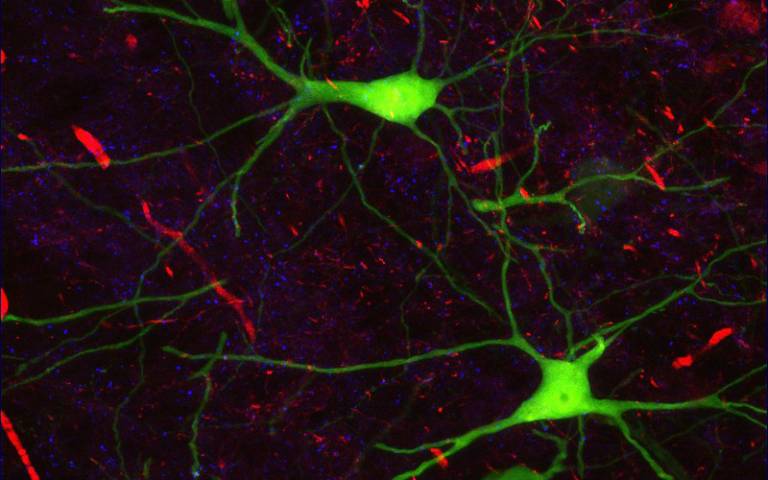At 2:36 a.m., Emma stares at her phone, thumb flicking upward in an endless scroll. Her eyes burn, dry and gritty. The faint blue glow illuminates the hollow of her cheekbones, the furrow of her brow. She can’t remember what she was reading—a news article, a stranger’s Instagram post, a viral meme—but she can’t stop.
Outside her window, the world sleeps under a velvet sky. But Emma can’t sleep.
She’s not alone. In bedrooms, living rooms, and lonely offices around the world, millions of people cradle devices long into the night. Screens cast a soft, shimmering glow over their faces, like a modern-day campfire, warming us with connection but stealing something else in the process.
We’re living in the most connected era humanity has ever known. Instant communication. Infinite knowledge. Boundless entertainment. Yet somehow, we’re lonelier, more anxious, and more exhausted than ever.
This paradox drives the growing call for a “digital detox”—an intentional step back from screens and technology. But is the problem truly our devices, or something deeper embedded in human nature? And does turning off our phones for a few days really heal the wounds of modern life?
To answer these questions, we must venture into the undercurrents of our digital existence: the lure of endless connection, the subtle rewiring of our brains, the emotional toll we rarely speak of—and the fragile possibility of reclaiming our humanity.
A Civilization Wired for Stimulation
Technology has always been the story of human progress. From flint tools to printing presses to telegraphs, each new innovation transformed how we live and communicate. But no invention has infiltrated our private consciousness quite like the smartphone.
Consider the numbers. The average person touches their smartphone over 2,600 times per day. Many spend more than seven hours daily gazing at screens. Notifications buzz and chime like modern-day bells, slicing our attention into fragments.
Apps are designed to keep us hooked. Bright colors, variable rewards, social approval—psychologists call it the “dopamine loop.” Every like, every ping, releases a hit of feel-good chemicals, keeping us chasing the next digital morsel.
Technology taps into primal parts of our brain. We crave novelty because, evolutionarily, it kept us alive—new information could mean food, shelter, or danger. But in the digital world, novelty is infinite. There’s always another story, another tweet, another video waiting to hijack our attention.
In this relentless chase, moments of stillness feel foreign. Silence becomes intolerable. Boredom is taboo. We’ve forgotten what it’s like simply to be.
The Vanishing Art of Presence
Emma, like so many others, finds her days sliced into smaller and smaller fragments. She wakes up and reaches for her phone before her eyes are fully open. News updates. Emails. Overnight messages. Instagram reels of people she barely knows dancing in Bali.
While she eats breakfast, she scrolls TikTok. During work calls, her other hand taps through Slack notifications. In line at the coffee shop, she can’t bear to stand idle, so she checks the headlines again.
But even as her world expands digitally, something shrinks within her. Conversations feel surface-level. Books gather dust. Relationships strain under the weight of divided attention.
It’s not that Emma wants to ignore people. In fact, she craves connection. But the very tools promising connection are thinning the quality of her relationships. Her partner notices her drifting mid-conversation. Her friends feel neglected. Even when physically present, her mind is elsewhere.
She’s developed an invisible barrier—a glass wall between her and the real world.
It’s a condition scientists call “continuous partial attention.” We’re present, but only partly. And life lived in fragments leaves us emotionally unsatisfied.
A Body Under Siege
Digital immersion isn’t just a psychological phenomenon. It’s physical.
The human brain evolved over millennia to navigate forests and savannahs, to read subtle facial expressions, to decipher the language of body posture and tone. Now, in the glow of screens, our biology struggles to keep up.
Sleep, for instance, has become a casualty of our wired age. The blue light from screens suppresses melatonin production, the hormone regulating sleep cycles. People stay awake later, tossing and turning, their brains buzzing with digital residue.
Physicians report rising cases of “tech neck,” chronic migraines, and digital eye strain. Orthopedic specialists warn of “texting thumb,” a repetitive stress injury once unheard of.
Meanwhile, our hearts race with digital anxiety. Notifications spike cortisol levels. Social media fosters envy, comparison, and FOMO—the fear of missing out. Even virtual connections trigger social stress, because the human nervous system can’t easily distinguish between real-life rejection and digital rebuffs.
Our bodies live in perpetual fight-or-flight.
And perhaps most insidiously, we’ve normalized this. The fatigue, the stress, the sense of always being “on”—we call it modern life. But it’s eroding our health in ways we’re only beginning to comprehend.
The Fragile Fabric of Relationships
Emma remembers when conversations flowed without interruption. When a dinner with friends meant laughter, not a table illuminated by phone screens.
But now, mid-sentence, someone’s phone vibrates, and they’re pulled into a parallel world. The moment dies. The emotional intimacy dissipates.
Sociologists have coined the term “phubbing”—phone snubbing—to describe how digital distractions damage relationships. Even a phone on the table, unused, signals to partners that they’re competing with potential interruptions.
Studies show that people feel less empathy and closeness when a phone is present during conversation. Romantic partners feel less satisfied. Children feel ignored, creating subtle wounds that echo into adulthood.
Emma’s partner once accused her of “disappearing” even when she was physically there. It stung. But in her private moments, Emma knows he’s right. She’s drifting through life, always on the brink of checking something else.
The problem is not just disconnection. It’s the illusion of connection. Technology feeds us breadcrumbs of intimacy while starving us of the real thing.
The Specter of Loneliness
Paradoxically, technology offers us infinite ways to connect—but leaves us lonelier than ever.
Loneliness isn’t merely about being alone; it’s a feeling of disconnection. We can have thousands of followers and still feel unseen. We can message people all day but never feel truly known.
Social media fosters a highlight-reel culture. People post curated moments of success, beauty, and joy. Scrolling through this endless parade, Emma sometimes feels like her life is inadequate by comparison. Everyone seems happier, more successful, more fulfilled.
This illusion fuels a cycle of anxiety and sadness. The more disconnected we feel, the more we seek digital validation. But the likes and comments rarely satisfy the deeper hunger for genuine human connection.
It’s no surprise that psychologists have linked excessive social media use to depression and anxiety, especially among younger generations who’ve never known a world without the internet.
Emma wonders sometimes: if she vanished from the digital world, who would notice? Who would truly care?
And she’s terrified of the answer.
An Escape We Can’t Find Offline
People often romanticize the idea of a digital detox. “Just turn it all off,” friends advise Emma. “Go offline for a weekend.”
It sounds simple. But stepping away from technology reveals deeper truths.
A digital detox isn’t merely about switching off devices. It’s about facing the silence we’ve been avoiding. Without notifications and distractions, we’re left alone with our thoughts, our fears, our unresolved questions.
Many discover that the scariest part of disconnecting is confronting themselves.
Emma tried a detox once. She locked her phone in a drawer for 48 hours. At first, she felt liberated. She went for a walk without documenting it. She sat in a café and watched people instead of her screen.
But by the second day, an anxiety crept in. What if she was missing something urgent? What if people thought she was rude for not replying? The silence felt oppressive.
She realized she’d used technology to fill an emptiness—boredom, loneliness, discomfort. Without it, she felt exposed. Vulnerable.
The truth is, technology addiction often masks deeper needs. A digital detox alone can’t fix wounds in our hearts.
A Culture Addicted to Speed
Part of why we cling to technology is the culture we inhabit. We live in an age of speed. Faster connections. Instant answers. Immediate gratification.
We’ve become intolerant of slowness. Waiting is an affront. Boredom feels like failure.
Emma used to read novels, savoring the slow unfolding of stories. Now, even five-minute videos feel long. Her attention span has splintered into fragments.
It’s not entirely her fault. Tech companies deliberately engineer experiences for speed and stimulation. Algorithms serve up content tailored to our impulses. They profit from our distraction.
But there’s a price to living at warp speed. We lose depth. Nuance. The ability to sit with complexity.
A digital detox isn’t just about stepping away from screens—it’s about reclaiming slowness, rediscovering patience. It’s about remembering that life’s richest experiences often unfold gradually, away from the glow of pixels.
The Renaissance of Mindfulness
Amid the chaos, some are discovering that the antidote to digital overwhelm isn’t simply rejection—but mindful engagement.
Emma’s friend Lucas, a graphic designer, used to wake up each morning and check his phone before he’d even sat up. One day, after a panic attack left him gasping for breath, he decided to make a change.
He replaced his phone alarm with a traditional clock. He instituted phone-free meals. He set limits on social media apps. And he began meditating for ten minutes each morning.
It wasn’t easy. The urge to check his phone clawed at him like an itch. But over weeks, Lucas noticed a subtle transformation. He felt calmer. More focused. Less reactive.
Mindfulness—paying deliberate attention to the present moment—helped him break free of the compulsive dopamine loops. It allowed him to rewire his brain’s pathways, finding joy in simplicity.
Mindfulness doesn’t demand abandoning technology entirely. It means using it with awareness. Choosing what truly matters.
Technology as a Tool, Not a Master
The truth is, technology isn’t inherently evil. It connects families across oceans. It delivers knowledge to remote villages. It allows artists to share their creations with the world.
The problem arises when technology shifts from being a tool to becoming our master. When our devices dictate our moods, shape our identities, and erode our relationships, we surrender something essential.
A digital detox, in its purest form, isn’t about rejecting technology forever. It’s about remembering who we are without it.
Emma begins to wonder: Who is she when the notifications fall silent? When she’s not performing for social media? When she’s not chasing likes or replies?
These are questions worth asking.
Because if we lose the ability to be alone with ourselves, we risk losing the essence of our humanity.
The Path Forward
There’s no single blueprint for a digital detox. For some, it might mean setting strict boundaries: no screens after 9 p.m., phone-free dinners, social media fasts. For others, it might mean longer retreats into nature, disconnected from digital noise.
But the goal is not to demonize technology. It’s to restore balance. To ensure our tools serve us, rather than enslave us.
Emma begins small. She leaves her phone behind on short walks. She redistributes apps so social media isn’t on her home screen. She reclaims Sunday mornings for reading print books, not scrolling timelines.
She discovers something unexpected. The world, in its rawness, is dazzling. The warmth of the sun on her face. The rustling of trees. The quiet joy of a conversation undisturbed by pings.
She feels moments of discomfort—emptiness where distraction used to be. But slowly, that emptiness begins to fill with something else: presence.
Reclaiming the Wonder of Being Human
A digital detox is not merely about reducing screen time. It’s about reclaiming wonder.
It’s remembering the pleasure of getting lost in a story. Of gazing at the stars without needing to photograph them. Of listening to a friend without an eye on the phone.
It’s about rediscovering the sacredness of boredom—the fertile soil from which creativity grows.
Emma, in quiet moments, begins to feel more alive. More connected to the texture of her own thoughts. To the rhythm of her breath. To the subtle music of life unfolding around her.
She realizes that technology can enhance life, but it should never replace it. And that the most important notifications aren’t digital—they’re the ones whispered by the heart.
We don’t need to flee modern life entirely. But we do need to remember that beyond the glowing screens lies a world waiting to be touched, smelled, tasted, and loved.
A world brimming with wonder.
A world that needs our full, undivided attention.






